► 40 years of Honda in the UK
► How it started, why it’s ending
► Parkers editor Keith Adams is our guide
The news that Honda is to close its Swindon factory in 2021 appears to be beginning of the end of an industry policy encouraged into being in the dying days of the Callaghan Labour government and nurtured under Margaret Thatcher’s Conservative cabinet during the 1980s. After 40 years of joint venture, car assembly and manufacture in the UK, Honda will bow out citing seismic changes in the automotive landscape as the reason. Not Brexit. Definitely not Brexit.
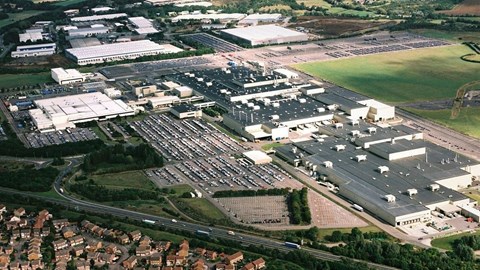
Honda and the UK go back a very long way. It’s a story which began with a management team from government-controlled British Leyland, headed by Austin-Morris’ then-boss Ray Horrocks, jetting off to Japan in October 1978 to begin formal talks with Honda’s senior management. The idea of a joint venture with the Japanese company to build one of its medium-sized cars in the UK came very much with the PM’s blessing.
6 months with a new Honda Civic Type R
This seemingly desperate measure was seen as a way of keeping BL afloat during some very dark times. The Austin Metro supermini was just around the corner, but any all-new mid-sized metal from BL wasn’t due to appear until 1983-84. At the time, its mid-market offerings weren’t exactly flying out of the showrooms: Triumph Dolomite (originally launched as the 1300 in 1965), Austin Maxi (1969), Morris Marina (1971) and Austin Allegro (1973). Being able to rationalise that lot and offer something new and Honda-shaped within this line-up must have looked extremely enticing.
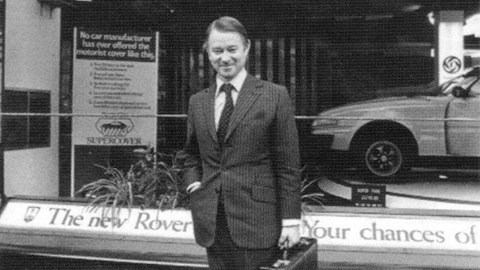
The deal took shape rapidly, and with the full support of the recently-elected Thatcher government. Within months, the handshake was made, and on Boxing Day 1979, Sir Michael Edwardes (pictured above) flew out to Japan to meet Honda President Kyoshi Kawashima and officially sign the collaborative deal between the two companies. Project Bounty was born and the plan to develop the Ballade into a Triumph Dolomite replacement began. In reality, little could be done. When it appeared as the Triumph Acclaim (below) in November 1981, aside from the badges, seats and colours, it looked, smelt and felt like a Honda, despite BL claiming it contained 80% local content.
Honda recognised the BL joint venture was a foothold into the EEC. In the early 1980s, there were trade tariffs to overcome, as well as a number of markets (including the UK) which capped the number of Japanese cars that could be sold here. By building its cars here, these trade barriers were circumvented. The BL-Honda deal didn’t go down well in Brussels, with the French attempting to block the deal, saying the Acclaim was a ‘Japanese Trojan Horse’. When that failed, other deals followed, including the infamous Alfa Romeo-Nissan (ARNA) deal.
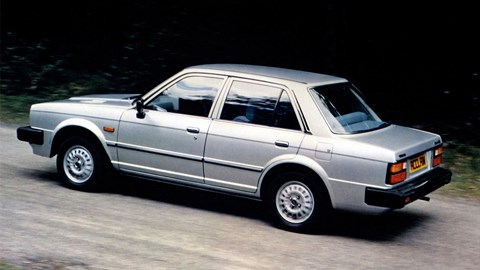
But the British-built Acclaim did very well indeed. It sold briskly, and BL dealers loves selling a car with such low warranty claims and excellent build quality, helping restore BL’s standing in the business. In a stroke, the Acclaim proved that British car workers were up with the best in the business, and that Honda could be secure in the knowledge that it could build cars in the UK – and they be up to scratch.
Soon, BL and Honda inked a more long-lasting deal, agreeing to build the second-generation Ballade (with more British content), swiftly followed by an all-new joint-venture large car. Honda was shrewd in its dealings with BL, though. Although the company joined forces on the Rover 200 (1984), 800 (1986), 200/400 (1989-90), 600 (1993), and 400-series models (1995), it tightly controlled what could and could not be changed on its designs after the first 800-series cars (pictured below) emerged from Cowley half-finished and majoring on poor body engineering. Its own version of the car, the Honda Legend never suffered this way – conclusion: leave the major engineering to Honda, and set up your own manufacturing facility.
Brexit and the UK car industry: what you need to know
The Thatcher government also liked the shape of the BL-Honda deal. A policy of talking to and nurturing the Japanese industry was built up with the backing of the PM and her Policy advisors. They wanted the rest of the big Japanese carmakers to follow-suit and pitch up in the UK. Government papers of the time revealed that Thatcher had been advised that BL was in a state of decline, and encouraging the Japanese carmakers in would help counteract that.
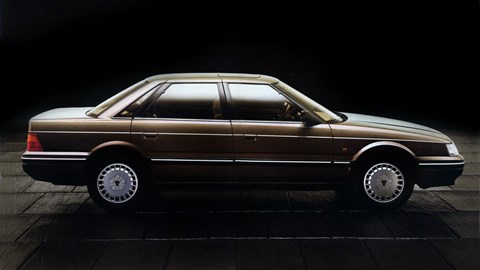
The first to arrive in the UK as a carmaker was Nissan in Washington, opening shop in 1986 with the Bluebird, following £125m government handout. And as a consequence of Honda’s contentment with UK manufacturing as a whole, it opened its own factory in Swindon in 1992, and started building European-market Accords there. Shortly afterwards, Toyota established a base in Burnaston to make the Carina E. All three companies showcased the UK as the place to build their cars, proudly stating our cars were as well made as anything from Japan.
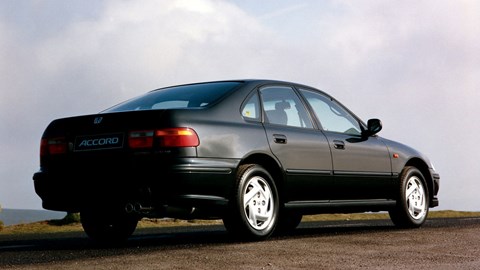
All three expanded, built cars in increasing numbers, opened up R&D centres, and expanded into their local communities to become as integrated as Austin and Morris had done 50 years previously. These were exciting times, and the Anglo-Japanese industrial love affair looked set to flourish. And it did for more than two decades.
Fast forward to 2019, and the picture is so much different. Although Toyota and Nissan remain committed to the UK, since the 2016 Brexit vote, it’s clear that both company’s faith in the UK and its level of investment here are on the wane. Of course, this isn’t just down to Brexit – the new EU-Japan Free Trade Agreement will eventually remove tariffs on direct imports from Japan into the EU, which takes away many of the incentives for manufacturing cars here. Especially as the UK is about to leave the EU.
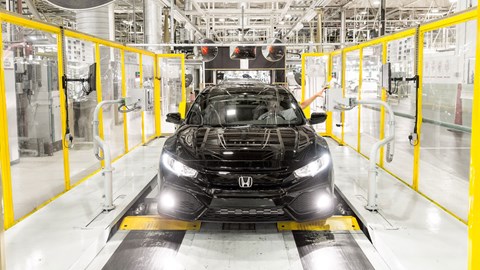
So, it looks like the Japanese car industry’s love affair with the UK has come to an end after many prosperous years following the launch of the Triumph Acclaim. Although Honda has said our decision to leave the EU is nothing to do with its decision to withdraw from the UK, it’s certainly not helped. This is especially true given the fact we’ve yet to negotiate an Anglo-Japanese trade deal just weeks before we’re about to leave the EU.
Let’s hope that the British motor industry is tough enough to recover from Honda’s withdrawal – we’ve endured dark times before and come out the other end. Let’s hope there’s enough left to see us through this crisis, too…